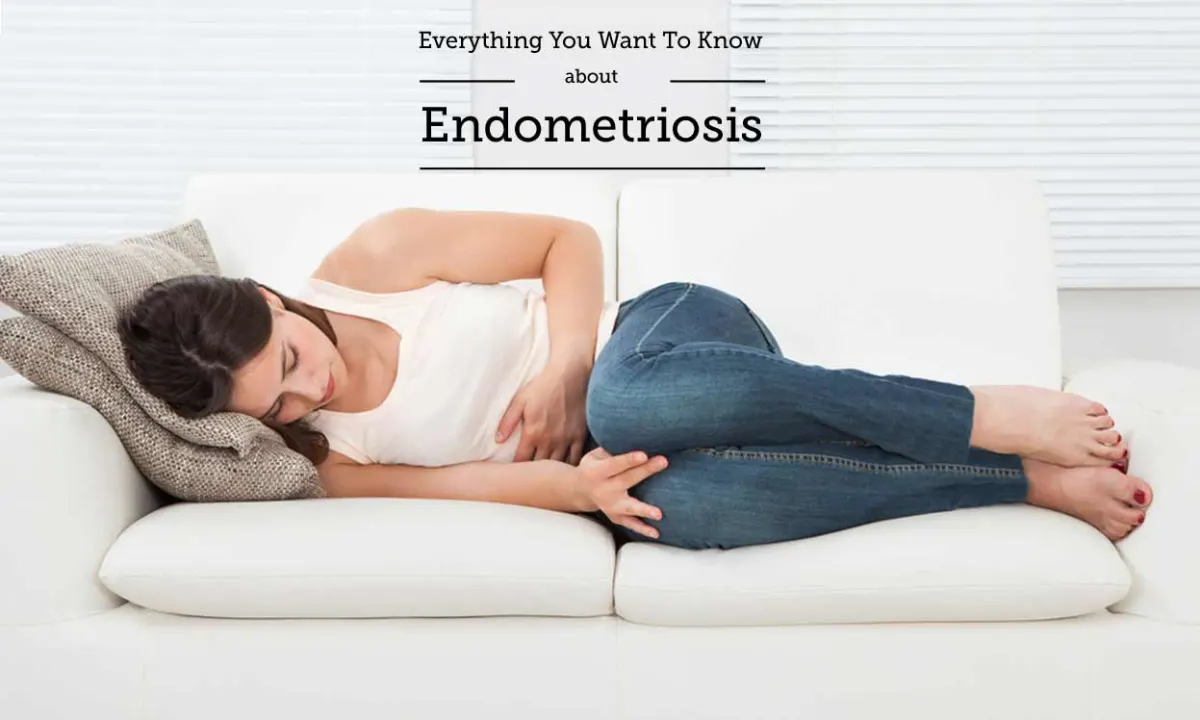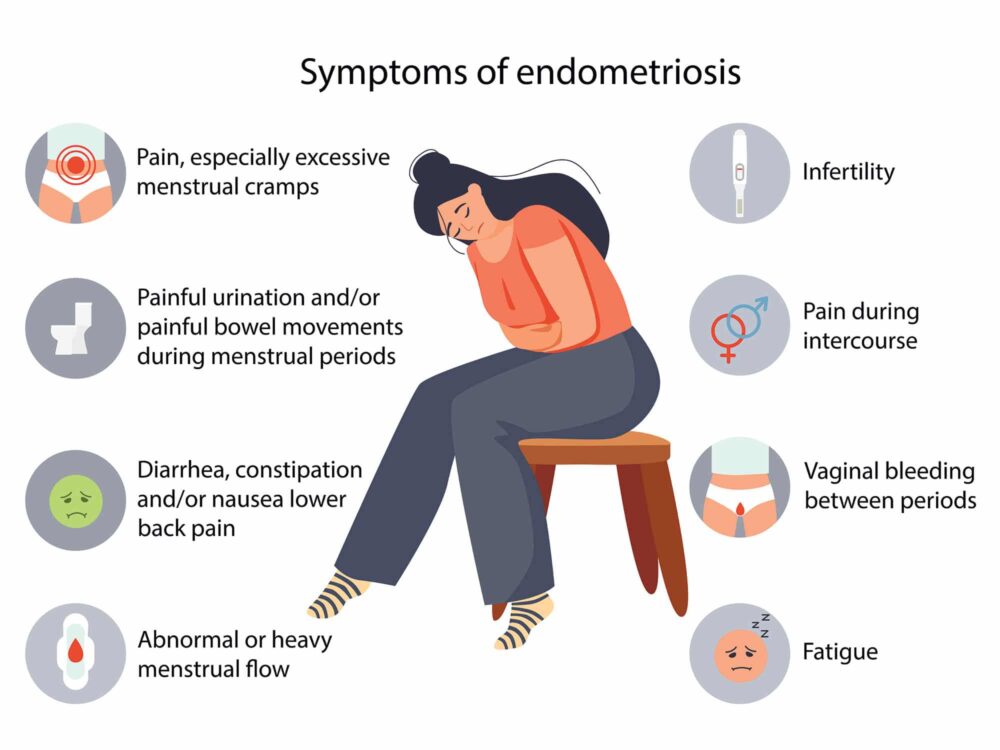
How to Sleep with Endometriosis Pain Endometriosis is a painful disorder in which the tissue that lines the uterus grows outside of it. This condition can cause pain, heavy periods, and infertility. Endometriosis pain can be especially difficult to manage during the night, as lying down in bed can put pressure on the affected areas and make the pain worse. In this article, we will explore some tips on how to sleep with endometriosis pain.
-
Find a Comfortable Sleeping Position
:max_bytes(150000):strip_icc()/endosymptoms-GettyImages-1357073875-3f20e6a1a5a9400e9f655e301f9f896e.jpg)
Finding a comfortable sleeping position can be challenging with endometriosis pain. However, experimenting with different positions can help to alleviate some of the discomfort. One position that may help is sleeping on your side with a pillow between your knees. This position can help to reduce pressure on the hips and pelvis, which can help to alleviate endometriosis pain.
Another position to try is sleeping on your stomach with a pillow under your hips. This position can help to take pressure off the lower back and reduce pain in the pelvic area. However, it is essential to make sure that your neck and spine are in a neutral position to avoid any strain or discomfort.
-
Use Heat Therapy
Heat therapy can help to reduce endometriosis pain by increasing blood flow and reducing muscle tension. Using a heating pad, hot water bottle, or warm towel can be effective in providing relief. It is essential to avoid using heat for an extended period, as this can lead to burns or skin irritation. Generally, 15-20 minutes of heat therapy at a time is sufficient.
-
Practice Relaxation Techniques
Stress can exacerbate endometriosis pain, making it difficult to sleep. Practicing relaxation techniques such as deep breathing, meditation, and yoga can help to reduce stress levels and alleviate endometriosis pain. There are several relaxation apps available that can guide you through deep breathing exercises and meditation practices, which can be helpful in promoting relaxation and reducing pain.
-
Consider Medication
Pain medication can be effective in managing endometriosis pain. Over-the-counter pain medications such as ibuprofen or naproxen can help to reduce pain and inflammation. However, it is important to consult a healthcare provider before taking any medication, especially if you are taking other medications or have a medical condition.
Prescription pain medication may also be an option for those with severe endometriosis pain. Your healthcare provider can provide guidance on which medication is appropriate for your individual needs and help to manage any potential side effects.
-
Create a Relaxing Sleep Environment
Creating a relaxing sleep environment can help to promote sleep and reduce endometriosis pain. Keeping the bedroom dark, quiet, and cool can help to promote relaxation and improve sleep quality. Investing in comfortable bedding and pillows can also help to improve comfort and reduce pressure on the affected areas.
-
Manage Fluid Intake
Managing fluid intake can be an effective way to reduce endometriosis pain during the night. Reducing the intake of caffeine, alcohol, and sugary drinks can help to reduce inflammation and alleviate pain. It is also important to avoid drinking too much fluid before bedtime, as this can lead to frequent trips to the bathroom and disrupt sleep.
-
Engage in Regular Exercise
Regular exercise can help to reduce endometriosis pain and improve sleep quality. Low-impact exercises such as walking, swimming, and yoga can be effective in reducing pain and improving mobility. Exercise can also help to reduce stress levels and promote relaxation, making it easier to fall asleep at night.
What position should I sleep in for endometriosis pain?
It can be helpful to sleep on your side with a pillow between your knees or on your stomach with a pillow under your hips to reduce pressure on the hips and pelvis. Experiment with different positions to find what works best for you.
What position helps endometriosis pain?
Sleeping on your side with a pillow between your knees or on your stomach with a pillow under your hips can help to reduce pressure on the hips and pelvis and alleviate endometriosis pain. However, it’s important to find what position works best for you.
Does laying down make endometriosis worse?
Lying down in bed can put pressure on the affected areas and make endometriosis pain worse. However, finding a comfortable sleeping position, using heat therapy, practicing relaxation techniques, and managing fluid intake can help to reduce pain and promote better sleep quality.
How can I get immediate relief from endometriosis pain?
Immediate relief from endometriosis pain can be achieved through the use of heat therapy, such as a heating pad or warm towel, over-the-counter pain medications like ibuprofen or naproxen (after consulting a healthcare provider), and relaxation techniques like deep breathing or meditation. It’s important to talk to a healthcare provider to determine the best treatment plan for your individual needs.
FAQs about Sleeping with Endometriosis Pain

What is endometriosis?
Endometriosis is a disorder in which the tissue that lines the uterus grows outside of it. This condition can cause pain, heavy periods, and infertility.
What causes endometriosis pain?
Endometriosis pain is caused by the tissue outside the uterus responding to hormonal changes during the menstrual cycle. The tissue can become inflamed and form scar tissue, which can lead to pain and discomfort.
What position should I sleep in for endometriosis pain?
Sleeping on your side with a pillow between your knees or on your stomach with a pillow under your hips can help to reduce pressure on the hips and pelvis and alleviate endometriosis pain. However, it’s important to find what position works best for you.
Can exercise help with endometriosis pain?
Yes, regular exercise can help to reduce endometriosis pain and improve sleep quality. Low-impact exercises such as walking, swimming, and yoga can be effective in reducing pain and improving mobility.
How can I manage endometriosis pain during the night?
Managing endometriosis pain during the night can be achieved by finding a comfortable sleeping position, using heat therapy, practicing relaxation techniques, and managing fluid intake. Over-the-counter pain medications or prescription medication may also be options to manage pain.
Does endometriosis pain go away on its own?
Endometriosis pain may come and go during the menstrual cycle, but it is a chronic condition that typically does not go away on its own. It’s important to seek treatment from a healthcare provider to manage symptoms and prevent complications.
Can endometriosis pain disrupt sleep?
Yes, endometriosis pain can disrupt sleep due to the pressure on affected areas while lying down in bed. Managing endometriosis pain can help to improve sleep quality and reduce disruptions.
What can I do to create a relaxing sleep environment with endometriosis pain?
Creating a relaxing sleep environment can help to promote sleep and reduce endometriosis pain. Keeping the bedroom dark, quiet, and cool can help to promote relaxation and improve sleep quality. Investing in comfortable bedding and pillows can also help to improve comfort and reduce pressure on the affected areas.
Is surgery necessary to manage endometriosis pain?
Surgery may be an option to manage endometriosis pain for some individuals, but it is typically not the first line of treatment. Treatment options may include pain medication, hormone therapy, and lifestyle modifications. A healthcare provider can provide guidance on the best treatment plan for individual needs.
conclusion
In conclusion, endometriosis can cause significant pain and discomfort, particularly during sleep. Finding a comfortable sleeping position and practicing relaxation techniques, such as deep breathing or meditation, can help to manage endometriosis pain and improve sleep quality. It’s important to work with a healthcare provider to determine the best treatment plan for your individual needs, which may include pain medication, hormone therapy, or surgery. By taking steps to manage endometriosis pain, individuals can improve their overall quality of life and promote better sleep health.






